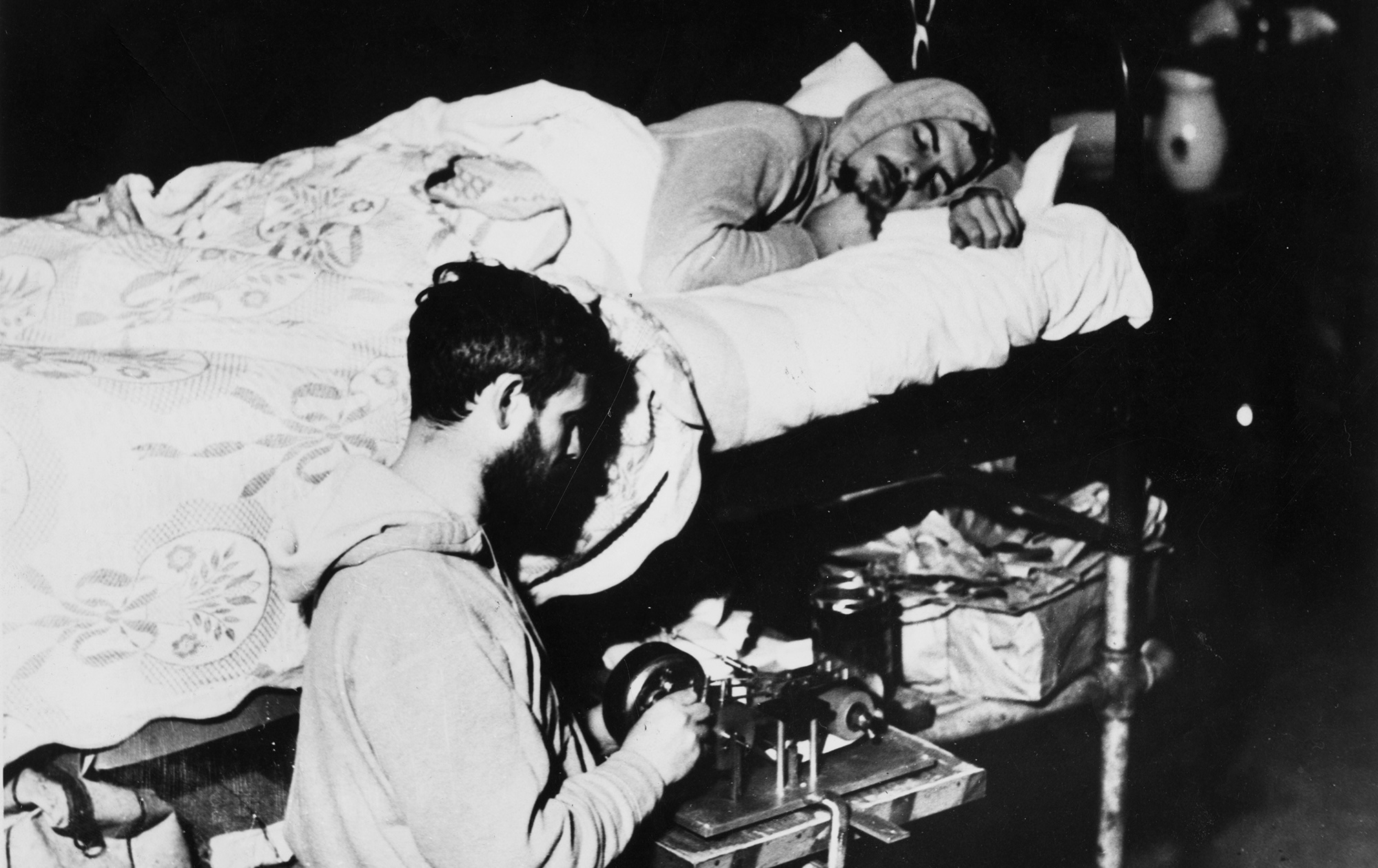
UChicago sleep researcher Nathaniel Kleitman, PhD 1923, and a research assistant in 1938 in Kentucky’s Mammoth Cave. They sought to study sleep cycles in the absence of sunlight and other temporal cues (UChicago Photographic Archive, apf1-03489, Hanna Holborn Gray Special Collections Research Center, University of Chicago Library)
A selection of UChicago alumni whose names are in the news.
Sleeping Giants
Journalist Kenneth Miller’s Mapping the Darkness: The Visionary Scientists Who Unlocked the Mysteries of Sleep (Hachette), published in October, is a history of sleep research in the United States. It is also, in part, a history of the University of Chicago—where Nathaniel Kleitman, PhD 1923, established the world’s first sleep laboratory in 1925. Kleitman made national headlines in 1938 after spending a month with a research assistant in Kentucky’s Mammoth Cave to study sleep cycles in the absence of sunlight and other temporal cues (pictured). Two decades later, with his student Eugene Aserinsky, PhD’53, Kleitman discovered rapid eye movement (REM) sleep. Another Kleitman graduate student, William C. Dement, MD’55, PhD’58, went on to do foundational work on sleep cycles, dreams, and sleep disorders. Miller tells how these scientists and others made sleep research into the wide-ranging field it is today.
Knight of Illuminations
Sandra Hindman, AB’66, has been named a Chevalière de l’Ordre des Arts et des Lettres (Knight of the Order of Arts and Letters) by the minister of culture of the French Republic. The award recognizes those who “have contributed significantly to furthering the arts and culture in France and throughout the world.” Professor emerita of art history at Northwestern, Hindman is an expert in medieval and Renaissance manuscript illumination and has published numerous books and articles on early manuscripts and printing, the history of collecting, and historic jewelry. In 1991 she founded Les Enluminures, an antique manuscript and jewelry gallery with locations in Paris, Chicago, and New York.
Immunology Fellow
In March Michael Edidin, SB’60, was recognized as a Distinguished Fellow of the American Association of Immunologists (AAI). The award recognizes active long-term AAI members for their contributions to research, teaching, and/or the professional immunology community. Professor emeritus of biology at Johns Hopkins University and an AAI member since 1977, Edidin has advanced the fields of biophysics and immunotherapy, specifically aiding our understanding of the structural function of cell membranes.
Crowning honor
In January Barry H. Rumack, SB’64, received the Prince Mahidol Award. Presented annually by the Prince Mahidol Award Foundation, an organization with the patronage of the Thai royal family, the honor recognizes two individuals, one in medicine and one in public health, whose research advances medical treatment internationally. Rumack’s contributions to public health research include developing tools now widely used to diagnose and treat paracetamol (acetaminophen) toxicity and founding the Poisindex digital database. Rumack is professor emeritus of emergency medicine and pediatrics at the University of Colorado School of Medicine.
American Art Chair
Robert C. Davidson Jr., MBA’69, was appointed chair of the Smithsonian American Art Museum’s board of commissioners for a four-year term. A member of the board since 2016 and past chair of its collection committee, he is the first African American chair of commissioners in the museum’s history. Davidson is the founder as well as former chair and CEO of the manufacturing company Surface Protection Industries. A dedicated philanthropist and collector of African American art, Davidson is affiliated with several boards, including the Council on Chicago Booth.
Community Banker
In November Alexander Ruder, MPP’07, received the Federal Reserve System’s Janet L. Yellen Award for Excellence in Community Development. A director and principal adviser in the Federal Reserve Bank of Atlanta’s community and economic development department, Ruder was honored for his work on researching and mitigating “benefits cliffs.” In these scenarios, low-income workers earn just enough to become ineligible for public benefits (e.g., Supplemental Nutrition Assistance Program, Medicaid), and thus become financially worse off than before. Ruder and colleagues have developed career planning tools that help workers avoid benefits cliffs and help businesses retain talent and support employees’ advancement.
